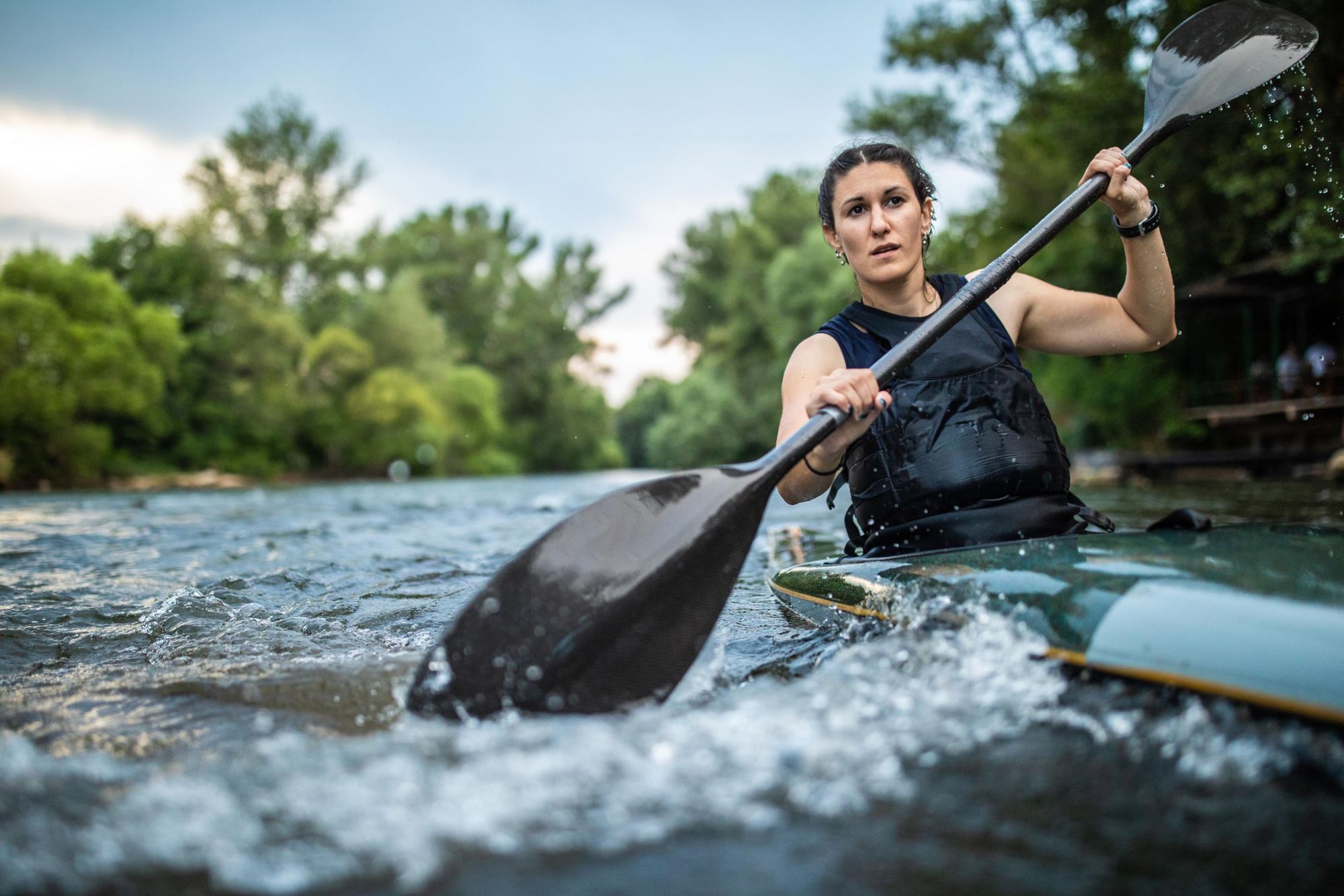Chances are, you’re reading this because you’re enthusiastic about several things: adventure, water and type two fun. Since you’re here, I’d like to share some things from my own life on the water. I’ve competed in whitewater slalom, which is a discipline of kayak racing, for over 15 years. However, my journey began with kayak expeditions, which means travelling under your own steam for several days at a time. Although I race professionally now, those days of adventure gave me a life-long love of kayaking and I hope that by sharing a couple of tips from my experiences, you may come to make water a big part of your life too.
Preparation is key to expeditions; where you choose to paddle, who you do it with and what equipment you need to take along the way.
No matter what kind of kayaking or canoeing you’re going to be doing, you’ll need three key things: yourself, the boat, and the paddle. When you go on the trip, you’ll get very well acquainted with all three of these things. In fact, you may even find yourself resenting those three things after a couple of days of using them. However, if you immerse yourself totally in the experience, you’ll come across something known as “flow state” - which is just a fancy term for the pure joy that comes from leaving your comfort zone.
Of course, you can romanticise the challenges of an expedition, but let’s be real, we all want to get to that joy and freedom part as quickly as we can. Preparation is key to expeditions; where you choose to paddle, who you do it with and what equipment you need to take along the way. While you may not get to choose all these things, you can choose to prepare yourself. Now, we’ve talked a bit about the most basic kit list – yourself, your boat, and your paddle. Your provider will sort you out with at least two of those three things. I’m going to add a tip about packing later, but for now – your itinerary is the map to having fun.
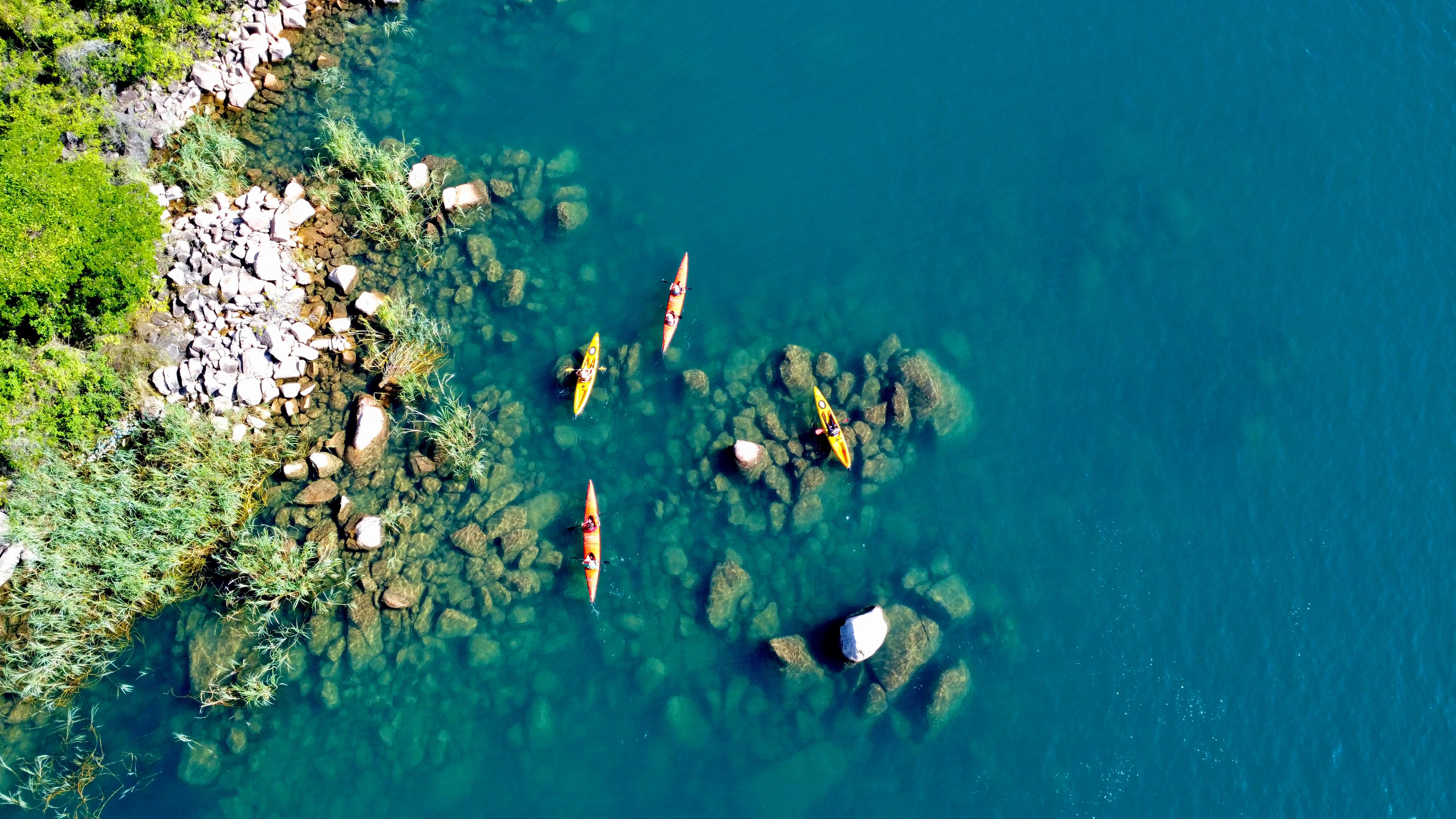
In this guide I’m going to give you some tips for preparing for a multi-day canoe or kayak trip. There are some exercises to help you prepare physically, and some helpful hints for when you start paddling. Of course, training does come with the risk of injury. If you're in any doubt whatsoever, we recommend that you seek professional health or fitness advice before embarking on any exercise program.
In the gym and on the trail
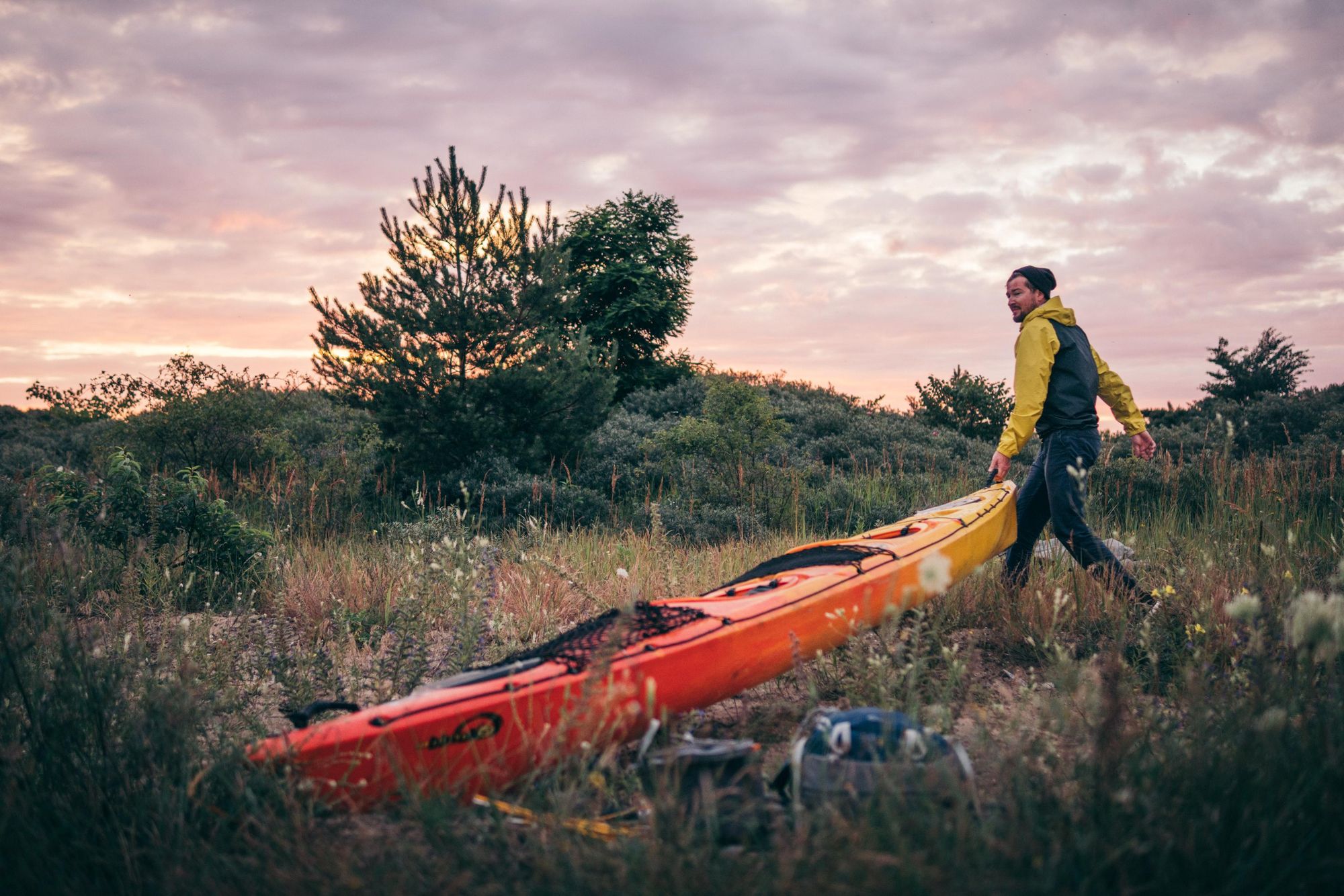
What’s the first thing you think of when you hear the words “canoeing” or “kayaking”? It is entirely possible that images of biceps, and very little else, spring to mind. However, when you add “expedition”, the picture changes. I’d like to share some body parts and exercises that may not be immediately obvious when you think about this kind of adventure.
The first, most important, and least discussed thing about expeditions, is that there will be walking. It won’t be a hike, if you get the right conditions and have a good plan. But there will be walking, and it will involve carrying a boat of some description. Probably with a fair amount of equipment inside. Think uneven terrain, awkward load carrying, and lots of stepping up and down, onto and into things. There will also be a lot of upper body work.
These three exercises are meant to get you comfortable moving around with your core engaged.
In a canoe or a kayak, your main engine is going to be your arms. Finally, the thing that connects your arms to your legs is your core. These three exercises are meant to get you comfortable moving around with your core engaged, meaning you’ll fatigue much more slowly on an expedition, be protected from injury and get the most from your experience.
1. Farmer’s walk
We’re going to revisit that part about awkward load-carrying across uneven terrain first. Farmer’s walk is an exercise which relies on core muscle engagement to hold your upper body in a safe, stable position. This protects your back and allows your legs to do their thing without your body wobbling about and making life rather difficult.
All you need is one dumbbell that feels relatively heavy in one hand. Don’t worry if that means 5kg, 10kg or 30kg. Just make sure it’s not so heavy that you can’t grip it for about 30 seconds. Find a clear 10m stretch of ground – we’re going to call it the “track”.

Now, stand at one end of the track and pick up the dumbbell with one hand. I’m sure I don’t need to tell you, but I’m going to anyway: use your knees, not your back, to avoid straining your muscles. Stand up straight and stiffen your stomach and upper body, holding the dumbbell slightly away from you. Walk along the track slowly, with small steps, keeping that tension in your core and keeping your dumbbell arm as stable as possible. Try not to let your shoulders hunch. You should feel the burn in your arm, core muscles and maybe even your hips. At the end of the track, carefully put down the dumbbell, take a second, then repeat with the other arm. Try to do this three times (let’s call each walk a “set”), with two minutes rest in between each set.
2. Pull-ups
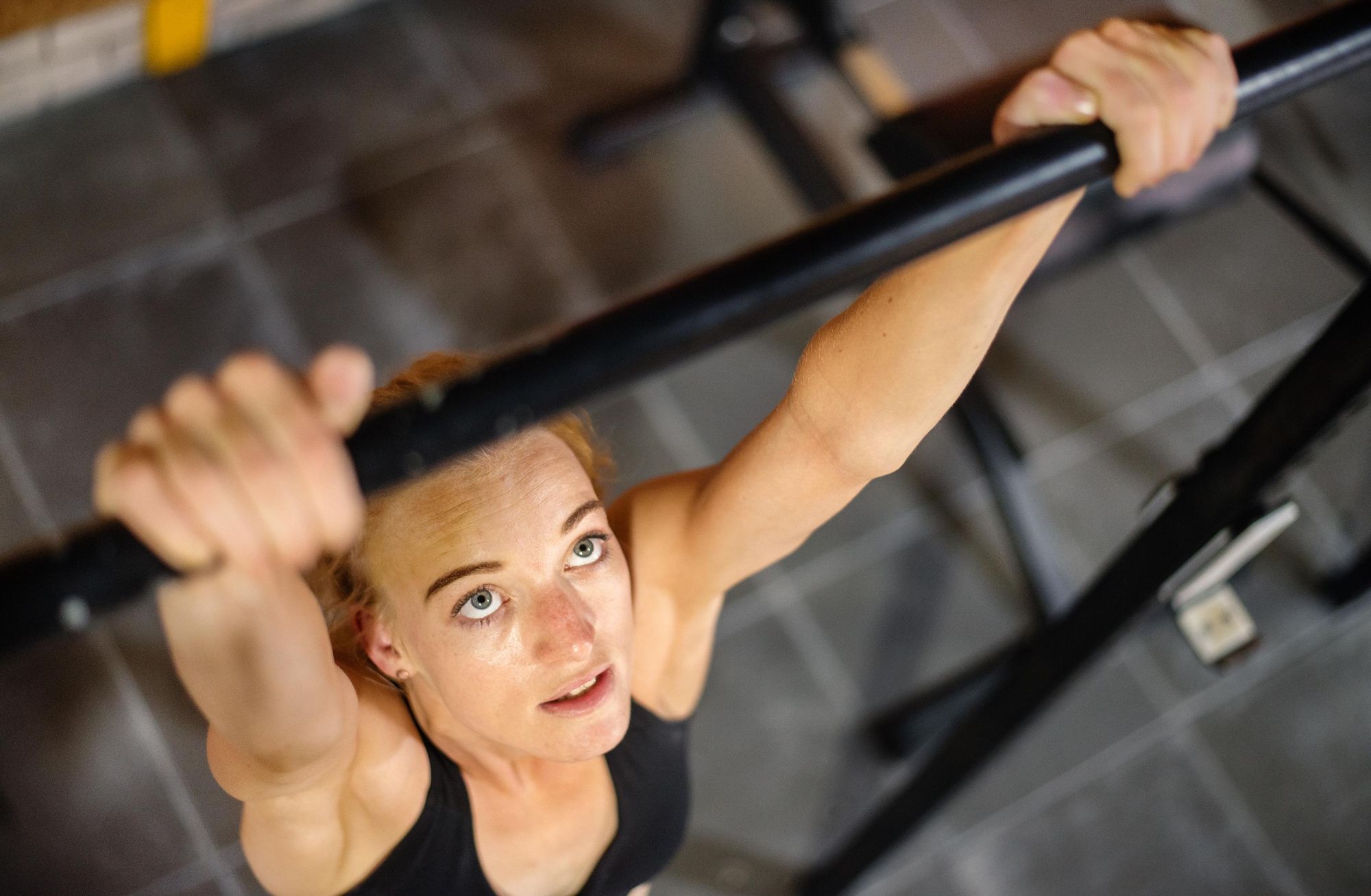
This is the paddler’s bread and butter; the exercise that covers all upper-body bases. Now, don’t panic – there’s a surprising number of even professional paddlers who can’t do a bodyweight pull-up. The point is, this overhead pulling motion engages your arms, back, core and lats in a coordinated movement.
For some insider clarity, a pull-up is having your palms facing away from you in an overhand grip. This is key to engaging your back and lats, and bypasses overusing your biceps. Think of a paddle – you hold it with an overhand grip. Find whatever kind of pull-up works for you – it can be a supine pull-up, with your legs resting on the floor and the bar sitting at about waist height. It can be with an assistance band, so you’re not holding your whole bodyweight. If you can do a bodyweight pull-up, that’s outstanding – not many people can!
Find whatever kind of pull-up works for you.
If you’re no stranger to this exercise, then feel free to add a little weight. For expedition strength, volume is your friend. Whichever way you can do pull-ups, try and do it for around four sets of eight repetitions.
3. Push-ups
Push-ups are the partner in crime to pull ups, and they engage the opposite set of muscles.
Again, this exercise is about finding the way to do push-ups that suits you. Whether you need to do it standing up against a wall, or from your knees rather than your toes, you will achieve exactly what we came here to do. The important thing is that you engage your core from start to finish on each push up, fully extending your arms at the top, and touching, but not resting, your chest to the floor at the bottom of the rep. Expeditions are about finding your pace, a speed of work you can maintain for long periods of time. Figure out what kind of push up works best for you and do it for four sets of eight repetitions.

I would suggest doing these three exercises two to three times a week. The earlier you can get started before your expedition, the more prepared you’ll be. Working on these for four to eight weeks before your expedition would provide significant benefits. But if you’re like me and plan things last minute, even doing this session once before you go will give you valuable awareness of key parts of your body and how they engage and work together.
Pro tips for paddling: getting started in a canoe or kayak
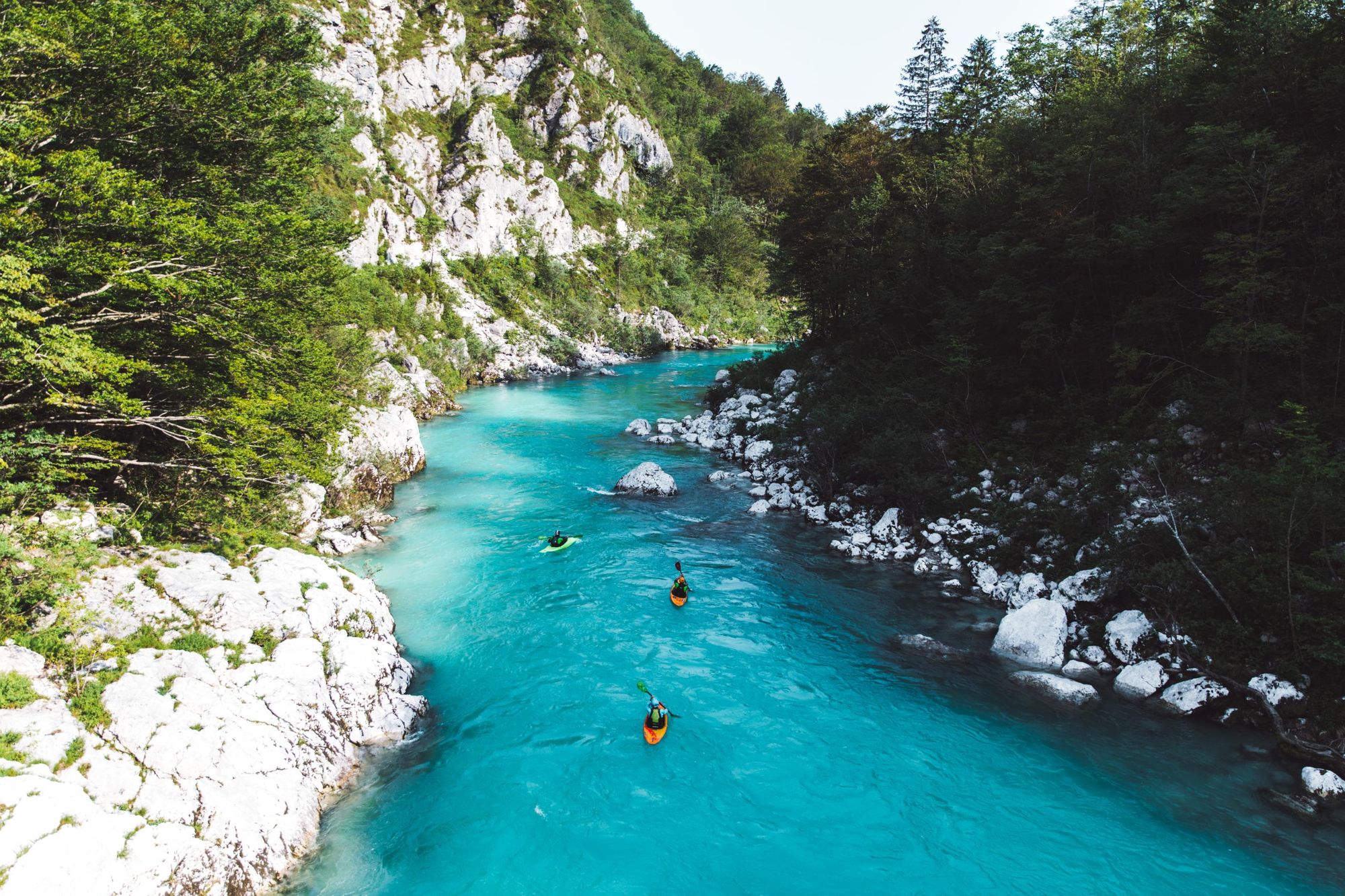
Now, I may be biased in thinking that paddling is the greatest activity of all time, but I have an argument for it. Kayaking and canoeing are challenging activities. They require balance, concentration and effort. The wonderful thing is that they are challenging for absolutely everyone trying them for the first time. We humans have been paddling for millennia, and we’ve figured out a solution for almost every kind of body type, ability, size, and weight.
It’s essential that you remember to use your expedition guide as a fount of knowledge.
The best way to get into kayaking or canoeing is to join your local canoe club. A quick search in the local area around your nearest body of water will invariably produce a club or business that can provide you with equipment and guidance. Beyond that, here are a few ideas…
1. Find your comfort zone
I’ve talked a little about comfort zones, and often our community of adventurers and prospective enthusiasts may see comfort zones as a thing you need to escape. However, through a career in kayaking that predominantly operates outside comfort zones, I have learnt that having an accurate awareness of your own comfort zone is essential to having a nice time. It’s essential that you remember to use your expedition guide as a fount of knowledge. They lead this kind of trip over hundreds of days throughout the year and meet loads of different people. Your guide will have seen everything. Think of them as holding your hand in a respectful, responsible manner – and remember that they’re there for your personal growth. They’ll help you improve every day you’re on the water.
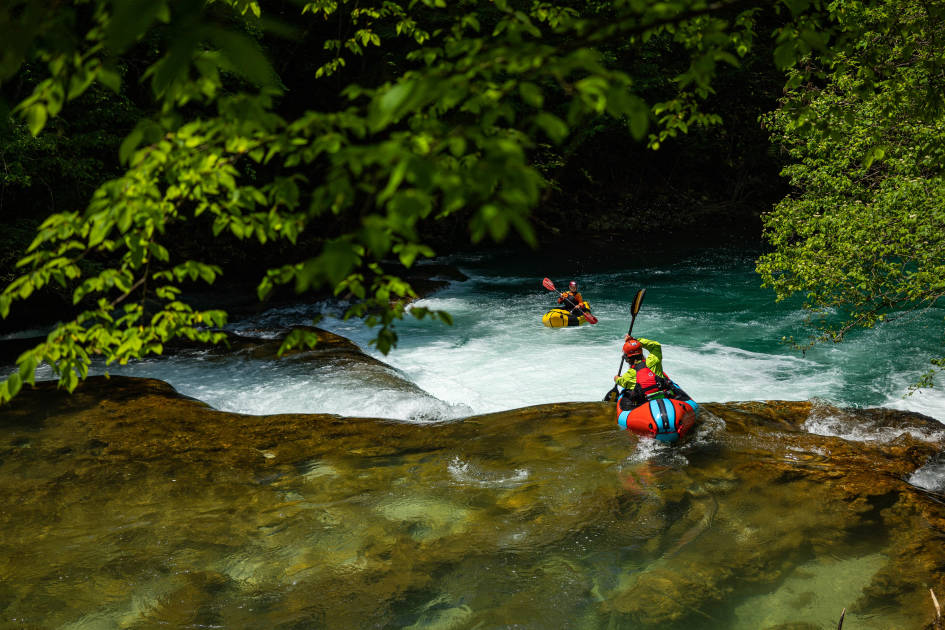
Another tip is to learn how comfortable you are with water. Try swimming in a pool with clothes on (preferably with permission and a coach). Try swimming in very cold water. Have a go at putting on a buoyancy aid – it’s a piece of equipment you’ll be wearing on your expedition, and it can feel awkward to swim with. I cannot overstate that you do not need to be comfortable doing any of these things to go on a kayak or canoe expedition. Just knowing how you feel when you’re in these situations is extremely helpful, and means you’ll feel more prepared when you’re out there. You may not fall into the water a single time, but I would suggest that having a go beforehand will turn what may seem like a very daunting experience into something that feels a bit more friendly, and possibly even fun!
2. Pack Properly
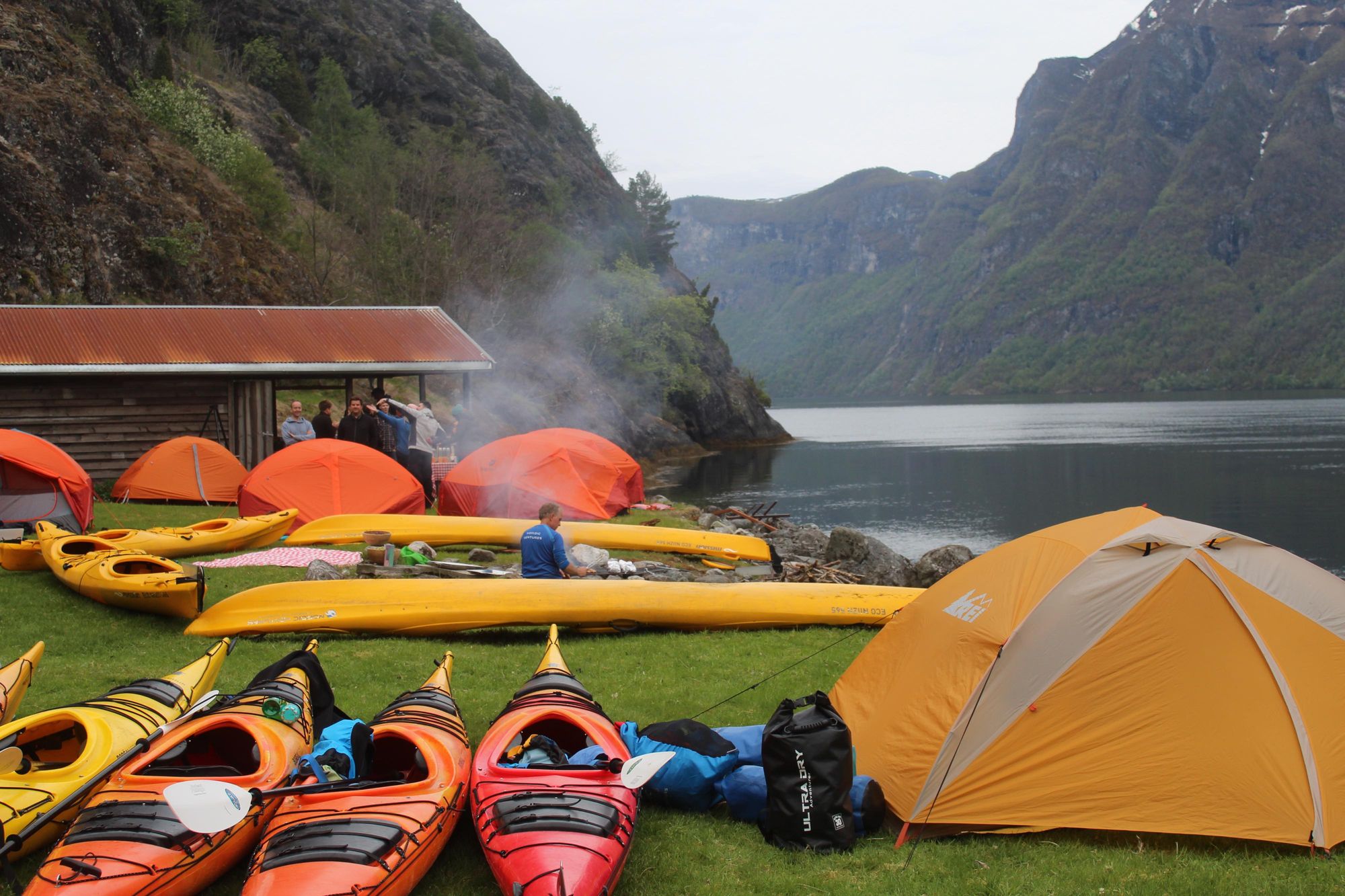
Perhaps an underrated, but expedition-essential tip is about packing. Your provider will set you up with the specialist gear you need: things like a boat, paddle, buoyancy aid and a helmet if you need one. Read the itinerary – you might not need to bring a tent, but you’ll definitely need a sleeping bag! If you have to buy one, remember you don’t need to spend a fortune. Check the lowest temperature advice on the label when you’re shopping. Depending on where the trip is, you may want a light sleeping bag for warm conditions, or a heavier grade bag for colder weather. For anything in the UK, I would recommend an all-seasons sleeping bag.
It’s physically tough travelling entirely under your own steam. If you’re doing it right, there will be a few times on the expedition where you may feel tired...
Next, you’re going to need layers. Remember to take at least two sets of dry gear – clothes for you to wear when you’re not in the boat. Are you a permanently cold person? If you are, you might need lots of fleecy layers. Paddling can be hot work, but if you get lucky with some wind, there could be a lot of sitting and going with the flow, so remember to pack some warm layers for activity too. How does all this stuff stay dry in the boat, you may ask? On paddling trips, we use either dry bags, or large waterproof barrels.

It’s worth practising packing a bag, making sure you keep your dry things away from your damp things, and stacking your gear in the order that you may need it. Finally, the set of kit I would strongly advise for any expedition: a warm hat, gloves (yes, even in summer!), a sun cap, sunglasses, a midge net and sunscreen. Water magnifies sunlight, and even on a cold day you can get a bad sunburn from the reflection.
3. Think about your individual needs
The next tip is to learn how comfortable you are with yourself. Simply booking an expedition, and doing some research into what it’s like, proves that you’re someone who’s up for an adventure. Have a think before you set off about what kind of energy you have. Do you need to snack once every two hours? If you do, do not sit starving in your boat! There will be meals, but make sure you have a few snacks stashed in your pockets. It’s physically tough travelling entirely under your own steam. If you’re doing it right, there will be a few times on the expedition where you may feel tired, and as though you’ve had enough.
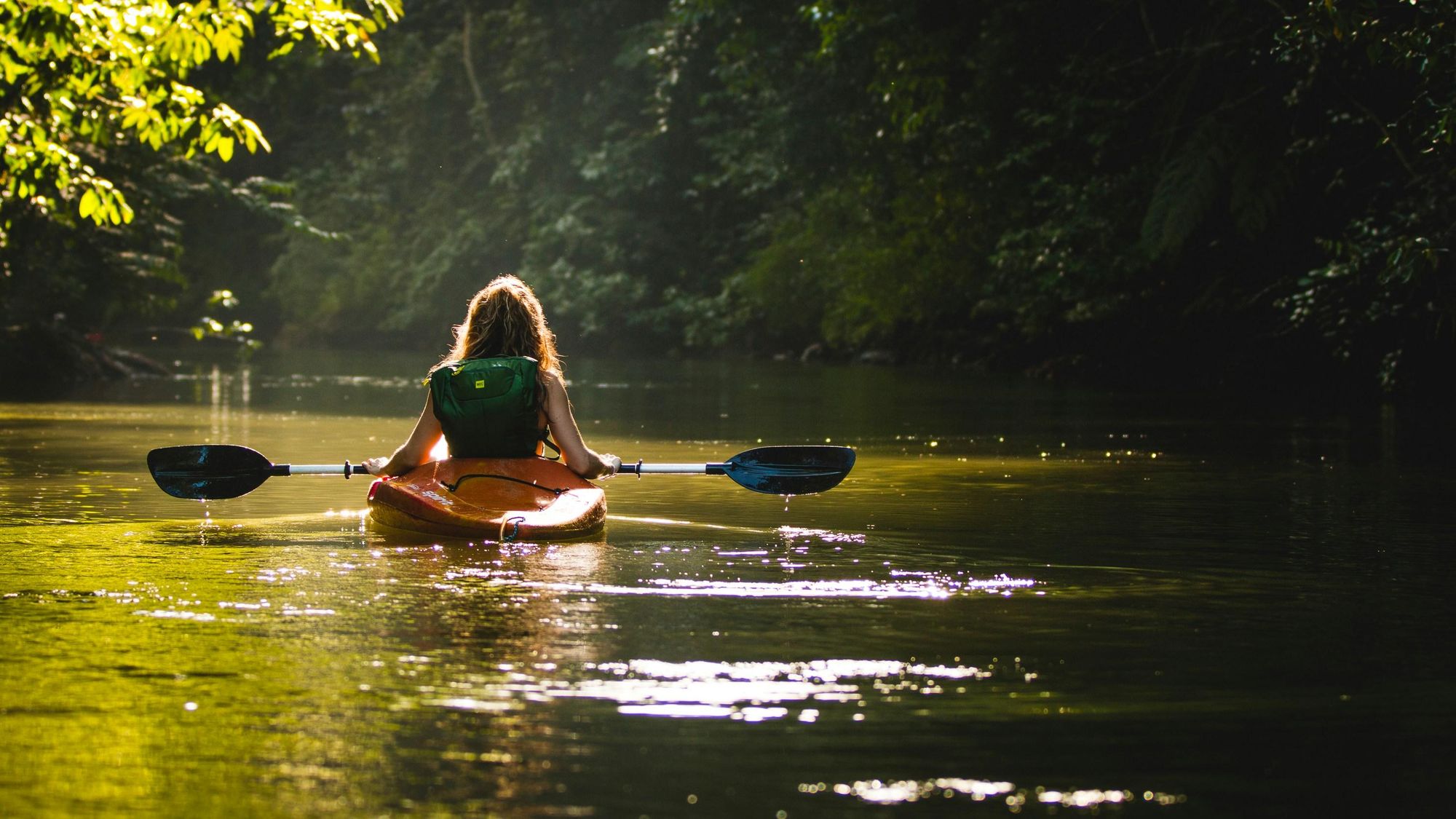
This is the first gateway to getting to know yourself. Every time you choose to keep going (let’s not romanticise this – you’re going to have to keep going to arrive at dinner and your bed!), you’re going to unlock a new level in yourself. Putting yourself in an environment where stopping is not an option says a lot. If you need to visualise the hot chocolate and sleeping bag that await you at the end of the day, don’t be ashamed. Keep going.
Remember to look where you’re going. Your head is the heaviest part of your body, and the boat will follow...
This tip comes from some hard-earned experience as a paddler who’s quite slow to learn. Canoeing and kayaking are both upper body-dominant. However, if you’ve had a go at the exercises above, you’ll see how much your back and arms rely on the rest of your body.

With that in mind, when you’re pulling on the paddle, don’t pull as hard as you can. Keeping the boat in a straight line is one of the hardest things to learn, and you can spend a huge amount of energy doing it. Remember to look where you’re going. Your head is the heaviest part of your body, and the boat will follow where you’re looking. Try not to get frustrated. It’s completely normal to spend a bit of time going in circles. Paddle with gentle strokes first, to see how the boat responds to you. Expedition paddling is about working smart, not hard, and your guide is the expert. Remember to grab their hand and let them teach you.
4. Embrace the group dynamic
Finally, an expedition almost always involves a group of people. It may be a group of people you’ve never met before. One thing has brought you all together, and it is, quite simply, that you want to get out there. Everyone on an expedition (even the guide!) is going to get tired and come across their own personal gateways at different times.
Be gentle, be kind, and ask for help. Remember, this is something you can practise every day, at home, at work, when you come across strangers at the gym or in the shops. Any anxiety you have around working with and possibly relying on a group of strangers is completely understandable. Just remember you’re all in the same wonderful boat.
Inspired? Check out our range of kayak and canoe adventures now!


